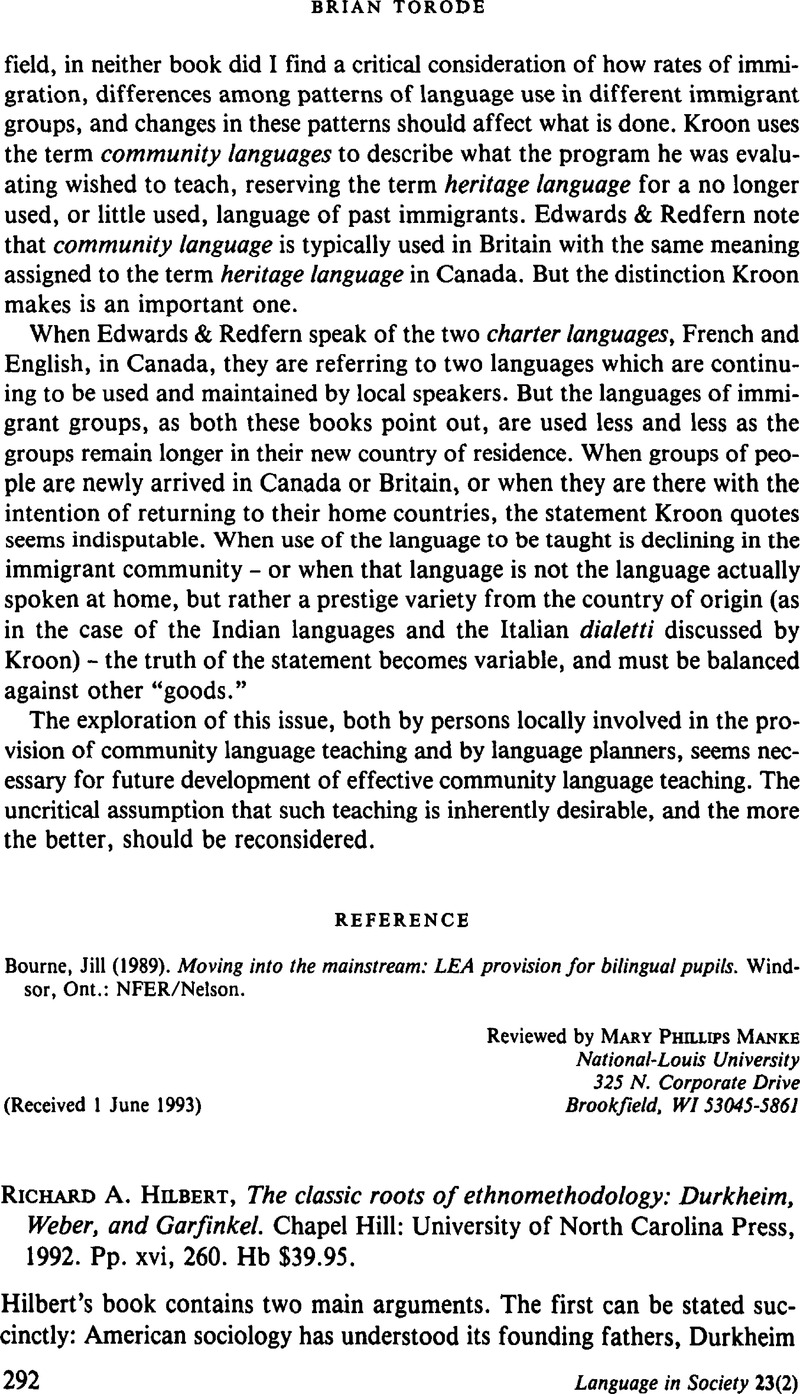No CrossRef data available.
Article contents
Richard A. Hilbert, The classic roots of ethnomethodology: Durkheim, Weber, and Garfinkel. Chapel Hill: University of North Carolina Press, 1992. Pp. xvi, 260. Hb $39.95.
Published online by Cambridge University Press: 19 February 2009
Abstract
An abstract is not available for this content so a preview has been provided. Please use the Get access link above for information on how to access this content.

- Type
- Reviews
- Information
- Copyright
- Copyright © Cambridge University Press 1994
References
REFERENCES
Alexander, Jeffrey C. et al. , eds. (1987). The micro-macro link. Berkeley: University of California Press.Google Scholar
Descartes, René ([1637] 1968). Discourse of method / The meditations. Trans, by Sutcliffe, F. E.. Harmondsworth: Penguin.Google Scholar
Parsons, Talcott. (1937). The structure of social action. 1968 ed. New York: Free Press.Google Scholar
Schegloff, Emanuel. (1968). Sequencing in conversational openings. American Anthropologist 70:1075–95.CrossRefGoogle Scholar
Schegloff, Emanuel (1987). Between micro and macro: Contexts and other connections. In Alexander, et al. (eds.), 207–34.Google Scholar
Schegloff, Emanuel, & Sacks, Harvey. (1973). Opening up closings. Semiotica 7: 289–327.Google Scholar
Wilson, Thomas P. (1991). Social structure and the sequential organisation of interaction. In Boden, Deirdre & Zimmerman, Don (eds.), Talk and social structure: Studies in ethnomethodology and conversation analysis, 22–43. Cambridge: Polity.Google Scholar




